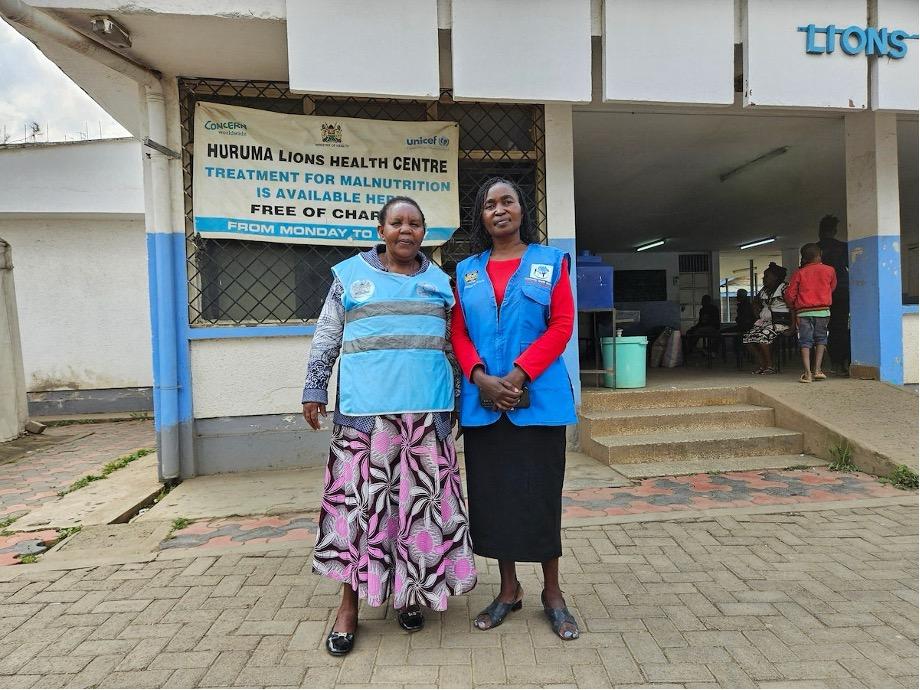
Desperate wails filled the night air as the raging Mathare River’s banks burst on 23 April 2024, demolishing makeshift homes and swallowing inhabitants amid the El Niño rains, deemed the strongest ever recorded.
“That first night, I was jolted awake by the sounds of iron sheets and wooden planks crashing … followed by the alarmed screams of neighbours,” recalls Isabella Nzioki, a resident of Mathare, one of the largest informal settlements in Nairobi, Kenya’s capital.
She rushed to help, never having imagined that the gender data skills she’d gained just a few weeks ago at a focus group discussion would be put to the test so soon, and so critically.
The discussion, jointly organized by UN Women and GROOTS-Kenya under the Women Count East and Southern Africa project, aimed both to document how grass-roots women and community-based organizations were using gender data in their work and deepen their grasp of how to use these data for better decision-making, advocacy and programme design.
Armed with a 32-page notebook and a new understanding of gender data, Nzioki immediately started recording details about the 81 survivors, including 64 women, some of whom were pregnant.
As a Community Health Promoter who had been working in the area for more than five years, Nzioki’s in-depth knowledge of the community, and her on-site enquiries, helped her to quickly identify people living with HIV/AIDS, children suffering from diarrhoea, and people with disabilities, such as asthma or breathing difficulties for priority assistance.
Isabella Nzioki shows the notebook she used to collect data on flood survivors on the first night of the disaster. Photo: UN Women/Sylvia Maina.
In a compelling demonstration of the power of citizen data – that is, data produced by individuals or organizations to monitor or drive action – Nzioki’s data proved invaluable when Kenya Red Cross arrived in the early hours to deliver food assistance.
Rachel Pauline Khalea, Nutrition Team Lead, Nairobi Focal Point and Volunteer at Kenya Red Cross emphasizes how valuable Nzioki’s data were to the humanitarian operation.
“[These] and other data helped us to identify these groups, including the most vulnerable, and inform specialized assistance, for example to pregnant and lactating women and those with children under 5,” said Khalea.
When Amref Health arrived shortly after, Nzioki’s data helped inform urgent decisions on the rapid establishment of a mobile clinic to manage chronic and sensitive medical needs, including medical assistance for a woman with cervical cancer who had excessive bleeding.
“Isabella knew where her households were and what their respective health needs were,” said Carol Kangai, Project Coordinator at Amref. “[Her] gathering the necessary data to help support responses helped members of the community to access both medicines and non-pharmaceuticals such as water treatment and sanitation items, that we provided as part of our outreach.”
Even before humanitarian assistance arrived, Nzioki used her data sheet to secure short-term antiretroviral medication from a nearby private health facility for identified people living with HIV/AIDS.
Nzioki speaks with community member William Ochieng, one of the first responders providing milk supplies for mothers with young children camping at the nearby school. Photo: UN Women/Sylvia Maina.
Although her house survived the flood, Nzioki slept on the cold floor at the camp that first night, accompanying neighbours whose homes had been destroyed.
When assistance came in the form of 20 initial mattresses, her data enabled humanitarian agencies to prioritize these for pregnant women and those with children under age 5.
“I found the data very powerful when it came to prioritizing help but also when managing complaints at the camp,” says Nzioki. “In the early stages, when people at the camp would grumble about how mattresses or other resources were being allocated, I would just hold up my notebook and they would see the list of the highly vulnerable and quiet down.”
She says having these disaggregated data even helped build trust between community members. “It was amazing that people could easily see that the allocations were fair and transparent and were then satisfied with the decisions,” she adds.
Nzioki also helped document another critical vulnerable group − bereaved and severely traumatized survivors, including mothers whose children had been ripped from their hands by the raging waters. These data again proved instrumental in escalating cases for counselling and psychosocial support from responding agencies.
“Through [these] and other data, we managed to systematically ensure that the residents who received assistance were actually those who were most affected by the floods,” said Community Health Assistant Christopher Kitheka.
Nzioki even presented her disaggregated data to the area chief, at his request, for further coordination with the Government and assisting agencies. When Government financial support of KSH 10,000 (USD $75 at the time) per household came through, Nzioki’s records helped to accurately identify those affected, as well as those most vulnerable, to properly direct the support.
“I was so impressed with how [these] disaggregated data helped to address gaps between survivors and humanitarian agencies,” says Nzioki. “By identifying survivors and their specific needs and helping those providing humanitarian assistance to properly direct their effort, [they] provided a quick and much-needed link.”
Nzioki continues to champion the use of gender data to solve problems in her community and share her knowledge.
The focus group discussion and subsequent engagements with gender data practitioners culminated in the publication of Unlocking the Value of Gender Data Use: A Regional Toolkit for Transformative Action by UN Women and GROOTS-Kenya in July 2024.


